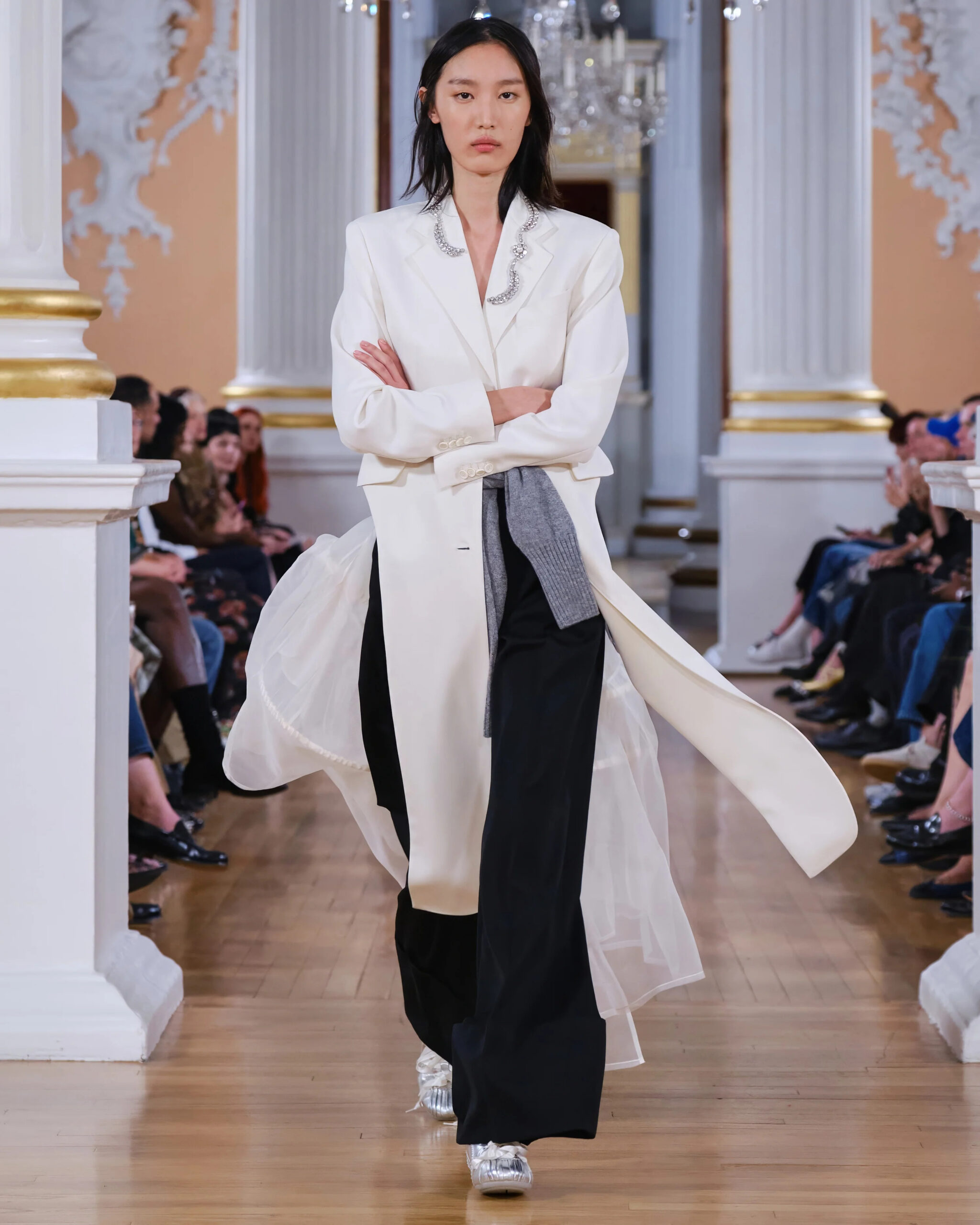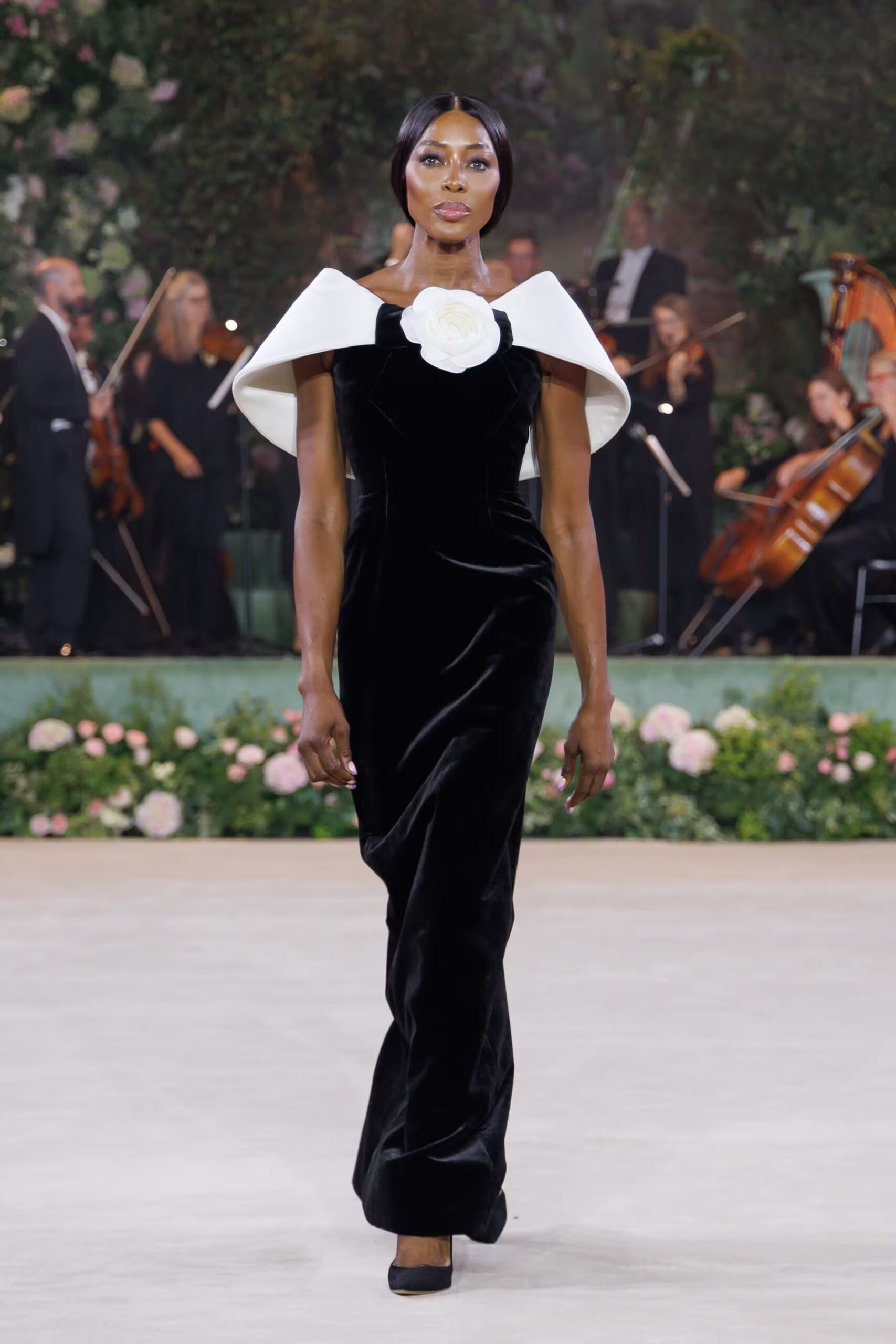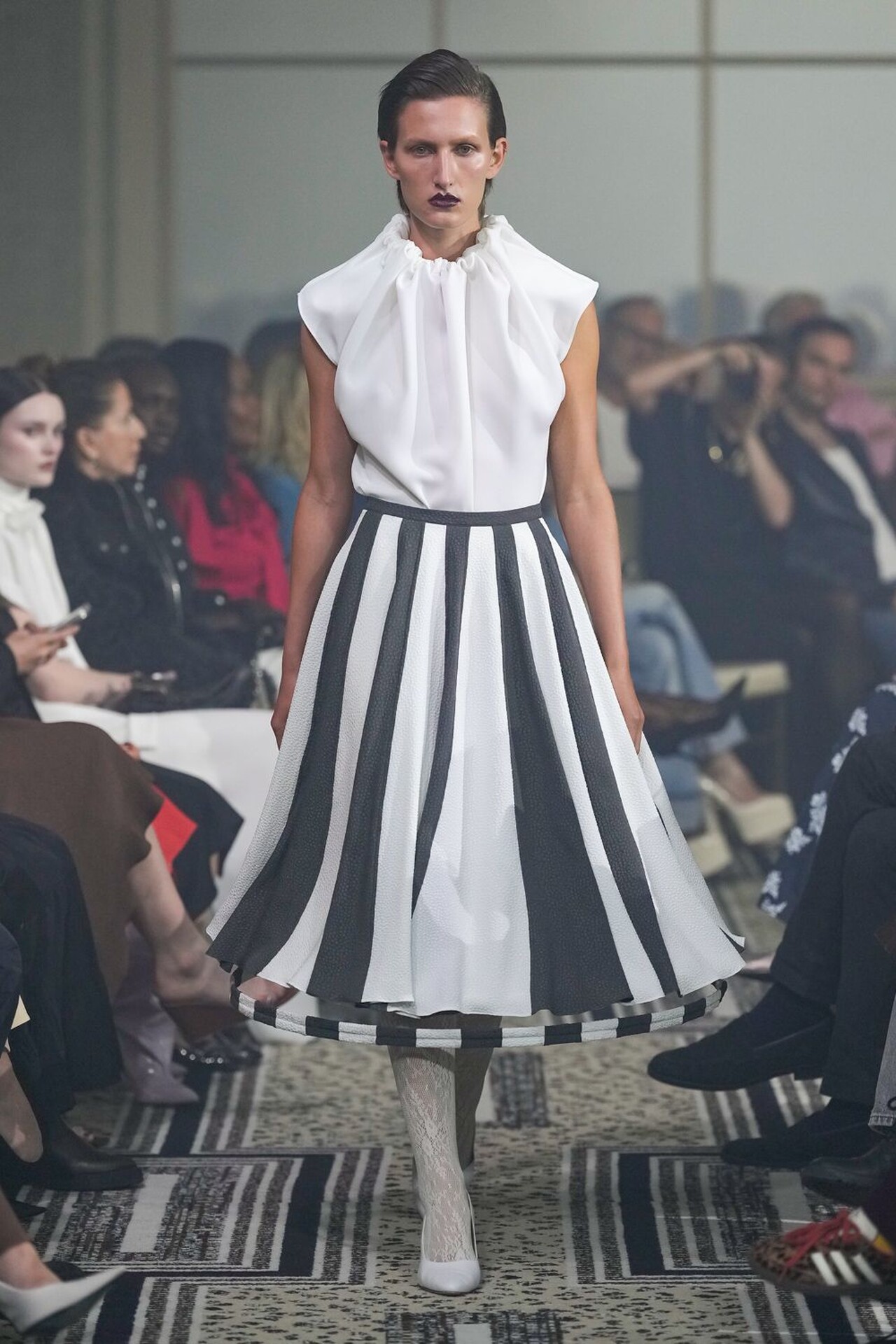LONDON FASHION WEEK REIMAGINES BLACK TIE
- BY KRISTOPHER FRASER
- 23 SEPTEMBER 2025
- 5 Min
In the late 19th century, black-tie dress codes were created as a more casual alternative to the white-tie dress code. The push for this less formal style was led by Prince Edward VII and American high society in Tuxedo Park. What helped further catapult black-tie dress codes into general popularity was the Golden Age of Hollywood and red-carpet style. Films depicting wealth and high society also helped solidify the black-tie image in the public’s mind.
Black-tie rules mandate that men wear a traditional black tuxedo with a white dress shirt, black bow tie, and polished shoes, while women should wear floor-length gowns, formal jumpsuits, or a women’s tuxedo. While black tie is seen as a precise formula, at London Fashion Week designers were on a mission to reimagine the dress code.
Creative black tie is its own dress code, and the London Fashion Week designers are on a mission to popularize it. At Simone Rocha’s runway show, she debuted a long white tuxedo jacket with a tulle train and black wide-leg pants, paired with metallic sneakers. Black-tie dress codes might give women the option of tuxedos, but they never specified how traditional these tuxedos must appear.

Photo: Courtesy of Simone Rocha
One of the most talked-about looks to come out of London Fashion Week was Richard Quinn’s black velvet column gown with a sculptural white collar and a single camellia flower on the chest, modeled by none other than legendary supermodel Naomi Campbell. The opening look was just a precursor to the many ways in which Quinn reimagined black and white this season, with succeeding looks including a black velvet dress with an oversized camellia flower and a dramatic cape; a white sparkly tweed dress with a camellia flower at the chest and a flared black tulle skirt; and a black velvet dress with a camellia flower at the waist, paired with black opera gloves and a sparkling white tweed cape. Although black and white aren’t a required color palette for women when it comes to black tie, for those trying to keep it minimal and coordinate with a male partner, Quinn provided about a dozen ways to do so.

Photo: Courtesy of Richard Quinn
Edeline Lee, one of LFW’s biggest breakout stars, teased how she’d be reinventing black-tie dress codes when she dressed fight director Kate Waters for a red-carpet appearance last week in a white ruffle blouse and black flared trousers. For her Spring 2026 collection, she reinvented her white blouse with a ruched collar, complementing it with a black-and-white striped skirt with a detached hoop detail, and, in royal dress code attire, paired it with white lace stockings (the unspoken expectation for royal dress code requires stockings or tights for women in skirts). Over the years, black-tie dress codes have seen ankle-length skirts and high-low variations, and Lee is pushing the boundaries of what qualifies as formal.

Photo: Courtesy of Edeline Lee
The rules for black tie are continuously being chipped away as people pride themselves on fashion over formality. Spring 2026 will mean a further push in the direction of creativity over archaic rules.
